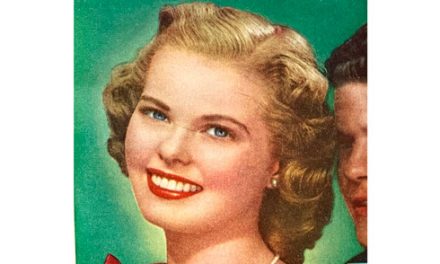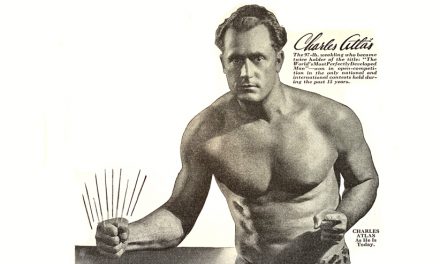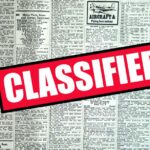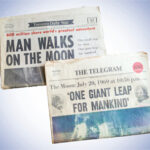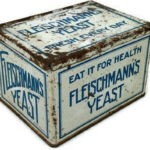What happened to the dream that air travel
would be “Oh so comfortable”?
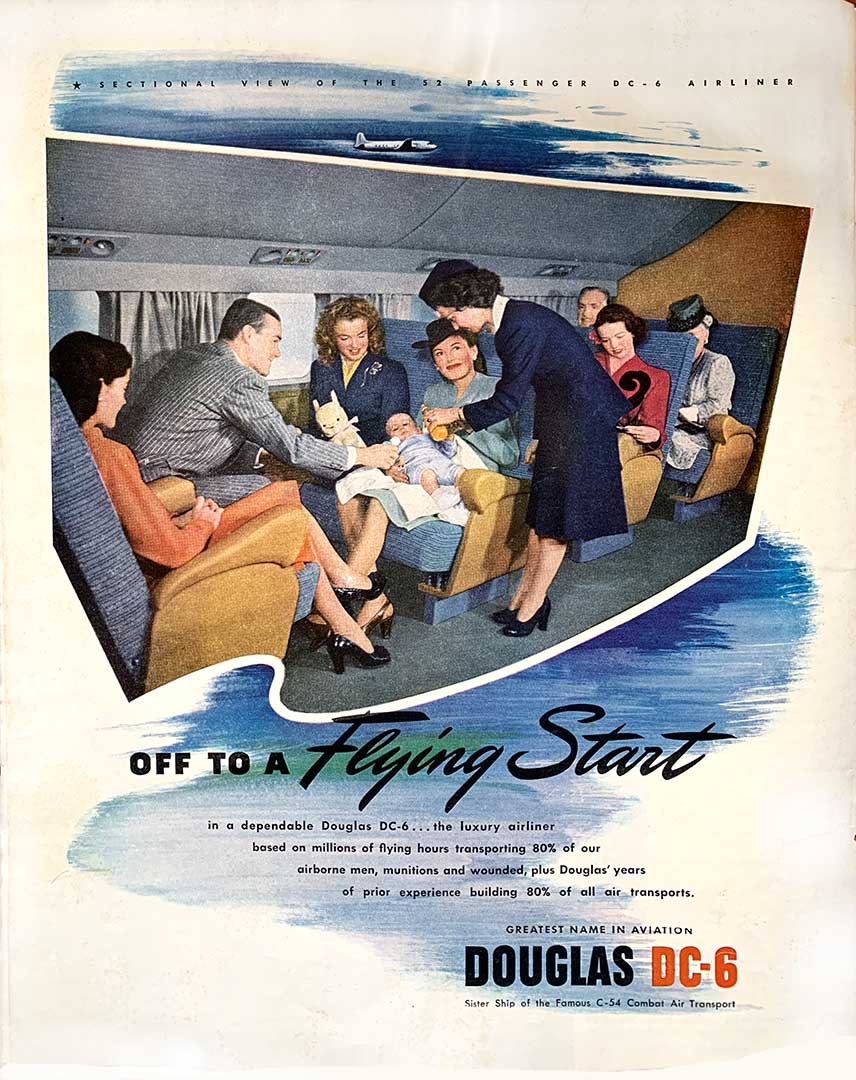
The interior of the plane in the advertisement above, remarkable by comparison with air travel today, closely matches a model that Delta Airlines advertised to be “as modern as a night club, yet quiet in tone and color. They’ll be exciting, but restful.”
In front of the plane, two groups of four seats on each side of the aisle faced each other, “arranged for bridge-playing foursomes, for business groups, for families traveling together.”
The Sky Lounge in back of the plane had “easy- chair comfortable seats” for six people. Delta invited customers to “join your friends for quiet conversation, cards or coffee, in the luxurious atmosphere of an exclusive club.”
Blue was the predominant color, with contrasting tan leather accents and ceiling fabric, accented with crimson red leather details. Walnut-paneled bulkheads separated the compartments.
That Delta model carried 56 passengers, including six Skylounge seats usable in-flight.
American Airlines and United Airlines ordered the commercial DC‑6 in 1946, and took delivery in November of that year. Pan American Airways used the DC‑6 to start tourist-class service across the North Atlantic.
When World War II ended in 1945, and the demand for military aircraft fell, the Douglas Aircraft Company modified its newly designed transport aircraft, commissioned by the United States Army Air Forces in 1944. That modified aircraft was the DC‑6.
The U.S Air Force chose the DC‑6 to be the Presidential Aircraft, a predecessor to today’s Air Force One. It was designated the VC-118, delivered on July 4, 1947, Independence Day, and named The Independence after President Harry Truman’s hometown, Independence, Mo.
This advertisement promoting the new plane appeared in Collier’s magazine in March 1946, three months before the DC6 flew on June 29, 1946. It showed how flying might have been.
Air travel is unpleasant today!
Standing in line for check-in…getting labels for baggage…trundling baggage to a designated counter which is poorly identified…hoping that the baggage will get to the destination with the plane and not disappear into a distant country.
Then there is the lineup at the departure gate where travelers with “status” get to board first and other passengers play the ‘age card’, or the “I can’t walk fast enough” or those who protest at the gate that they are in the right group to board.
On the plane it is worse. The aisles are narrow, the overhead bins aren’t large enough to accommodate baggage that is supposedly properly sized to be taken on-board.
The seats are so uncomfortable…so narrow…so close together…they recline a few inches—just enough to have the passenger behind ask that you straighten your seat-back. Then there is the kid who kicks your seat-back for that entire journey from hell.
The toilets are now so small that generously-sized passengers have to back into them.
Fortunately, airline food is now only served on overseas flights where the passenger is asked., “Chicken or pasta,” and left to wonder what they requested when it is delivered to their tiny table. Each tray comes complete with a stale bun, butter in a little container with sealed foil-paper covering, salt and pepper in small paper bags, and a tasteless pudding for dessert. On domestic flights the “airline food” has been replaced by odorous snacks carried aboard by travelers who believe they will need to eat on a one-hour flight.
By 1950, as we learn from this advertisement
in Collier’s magazine, the airlines of the world
had chosen the DC‑6 for their fleet.
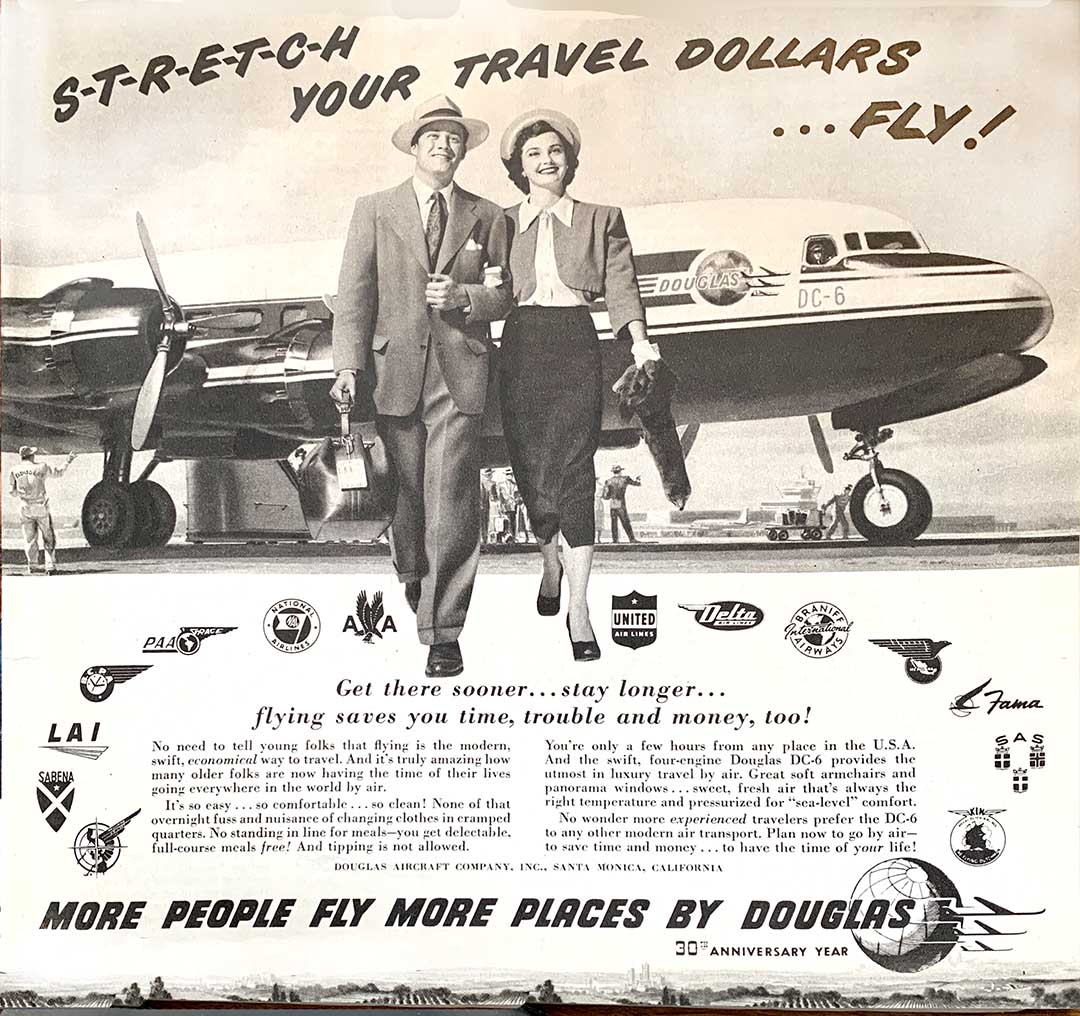
This advertisement contrasts
air travel on a Douglas DC‑6
with travelling by train
“It’s so easy…so comfortable…so clean! None of that overnight fuss and nuisance of changing clothes in cramped quarters. No standing in line for meals—you get delectable full-course meals free! And tipping is not allowed.”
Meanwhile, when Douglas was promoting the DC‑6, other aircraft manufacturers like Cessna and Republic Aviation were promoting their aircraft as the latest and the safest for personal flying.

What a difference today! Think about it everytime you plan to travel by air
To see for yourself other features of this aircraft, please view this 60-second newsreel film introducing the Douglas DC‑6 in 1946.
And link to a multi-camera 1950 film promoting the safety of the Douglas DC‑6


